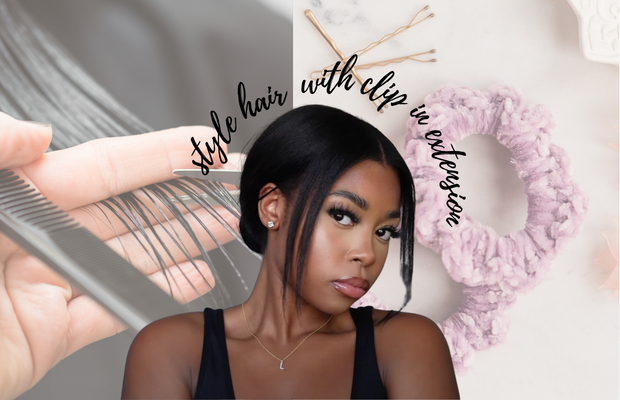The Easiest Way To Put In Clip-in Extensions for Thin Hair
Blending clip-in hair extensions into thin hair may be difficult. Achieving a natural-looking mix can be difficult due to lack of volume, limited coverage, and difficulties retaining extensions. However, with the proper procedures and some expert assistance, you may overcome these obstacles and get flawless blend hair. In this tutorial, I will show you how to apply clip-in hair extensions for thin hair.
The quality of clip-in hair extensions has a significant impact on how natural the final product looks. When purchasing clip-in hair extensions for thin hair, there are three key elements to consider:
Invisible Clip-In Hair Extensions: Invisible clip-in hair extensions are specifically developed to blend in with your natural hair, making them ideal for anyone with thin or fine hair. They are often lighter in weight and have a lesser density than standard clip-on hair extensions.
Matching color and texture: Thin hair clearly lacks volume and density. You may obtain a more balanced and harmonious look by choosing extensions with the same texture and thickness as your original hair.
Weight and excessive use of hair extensions: The weight of the added strands and using too much hair can lead to hair loss.
Prepare your natural hair
Preparing your original hair before using clip-in hair extensions is critical, especially for thin hair. It not only simplifies the installation procedure, but also ensures that the mix is seamless.
First, wash your hair with clarifying shampoo. Then use a blow dryer set to medium heat to dry your hair. When your hair is 90% dry, detangle it with a detangle brush or a broad tooth comb.
Begin by making a horizontal parting at the nape of your neck using a rat tail comb. Secure the top portion with clamps and brush the bottom area once more.
For thin hair, avoid placing clip-in hair extensions too high at the temples of your head unless they can be flawlessly merged.
Take a clip-in hair extension and apply it to the teased part of your hair. If you've achieved the desired appearance, secure it by snapping the clips shut. Then, release the top part and repeat the operation.
Consider the weight of the extensions: Thin hair is more prone to harm from hefty extensions. Choose extensions produced from high-quality, lightweight materials, as they are less likely to weigh down your natural hair.
Regular maintenance: Maintenance is essential for extending the life and quality of your hair extensions. If you are a newbie who has no experience caring for clip-in hair extensions, please refer to our clip-in extension care instructions.
Secure the clips properly: When applying the clips, ensure that they are flat against your natural hair. If required, gently tug on each weft to ensure that it is securely bonded. This prevents the extensions from sliding and becoming apparent.
Use smaller wefts: For thin hair, use clip-in extensions with tiny wefts or pieces. These thinner wefts will be simpler to conceal in thin hair, resulting in a more smooth mix.
Final Thoughts
Blending clip-in hair extensions with thin hair can be difficult, but with the appropriate techniques, you can achieve a natural-looking blend. Consider things like using undetectable extensions, matching color and texture, and paying attention to weight and clip attachment.
By following Michair's comprehensive guidance, you will obtain the information and abilities required to produce a seamless mix. With experience and good maintenance, you may confidently wear a seamless mix that improves both the appearance of your hair and your own confidence.








Comments
Post a Comment